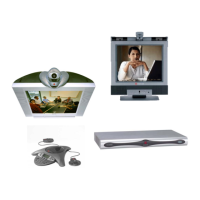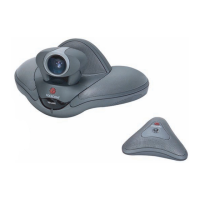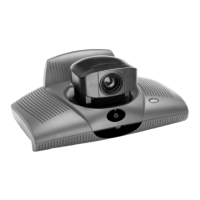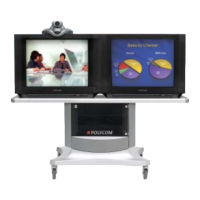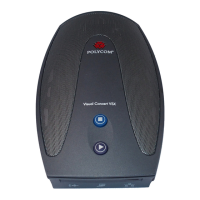the absolute values of all of the non-global settings of the device. This includes, but is not limited to, input and
output gain settings, matrix settings, algorithm settings, parametric EQ settings, and automixer settings. See
Section 7 for a list showing all the commands and which are saved to presets.
Presets should be used when you really want to change all the settings in a device. One example would be when
you want to have one unit be able to control different rooms. In this case, having a preset for each different
room is the easiest solution.
Macros are like mini-presets. You can define them to change only the settings you are interested in. One
advantage of macros over presets is that macros can make relative changes in addition to absolute changes. An
absolute change is something like "set the input gain to -3 dB". A relative change is something like "raise the
input gain by 3 dB". One example of using macros for a relative change is stereo volume ramping. If you have
two outputs setup to have left and right program audio, then you could build a macro that contains two
commands: one to increment the left channel by 1 dB and the other to increment the right channel by 1 dB.
Then, by calling that macro, you can ramp the stereo outputs. A similar thing can be done with decreasing the
volume.
Another thing to consider when using macros and presets is to use the
MACROQ and PRESETQ commands instead
of the
MACROX and PRESETX commands. Both the Q and X versions execute the macro or preset, but the X
versions produce acknowledgements for the settings that change, while the Q versions don't. If your control
system updates its status by looking at the acknowledgements that come back, then you'll probably want to use
the X versions. Another option would be to use the Q versions and then manually query the values you're
interested in. If your control system does not need use acknowledgements, or if you are manually querying the
values you're interested in, using the Q versions is better since it doesn't generate acknowledgements and thus
reduces RS-232 traffic.
3.5. Automixer Dependencies
The commands AMASGN, AMCHAIR, AMCHNUM, AMLMM, AMLMN, and MGATE have dependencies on each other
and can cause errors (ERROR#040 through ERROR#045) if an assignment attempts to break one of these
dependencies. See the descriptions of the above commands and the
ERROR command for more information on
these dependencies.
The dependencies in these commands can cause a problem when trying to build macros. For example, your
macro may use the above commands to set the automixer to a certain configuration. The problem is that
although your commands would put the automixer in a valid configuration, one of the intermediate
configurations might be invalid. If this happens, the invalid command(s) will not execute and the automixer will
not be in the configuration that you intended.
For example, assume that we start with all inputs assigned to automixer group "none" (
AMASGN), chairman mode
(
AMCHAIR) is disabled for both automixers, chairman mic (AMCHNUM) is set to 1 for both automixers, last mic
mode (
AMLMM) is set to off for both automixers, and last mic number (AMLMN) is set to 1 for both automixers.
Now, suppose your macro executes the following commands in the order shown.
AMASGN*ààààåååå
(assign inputs 1-4 to automixer 1 and inputs 5-8 to automixer 2)
AMCHAIR11
AMCHAIR21
AMCHNUM11
AMCHNUM25
AMLMM11
